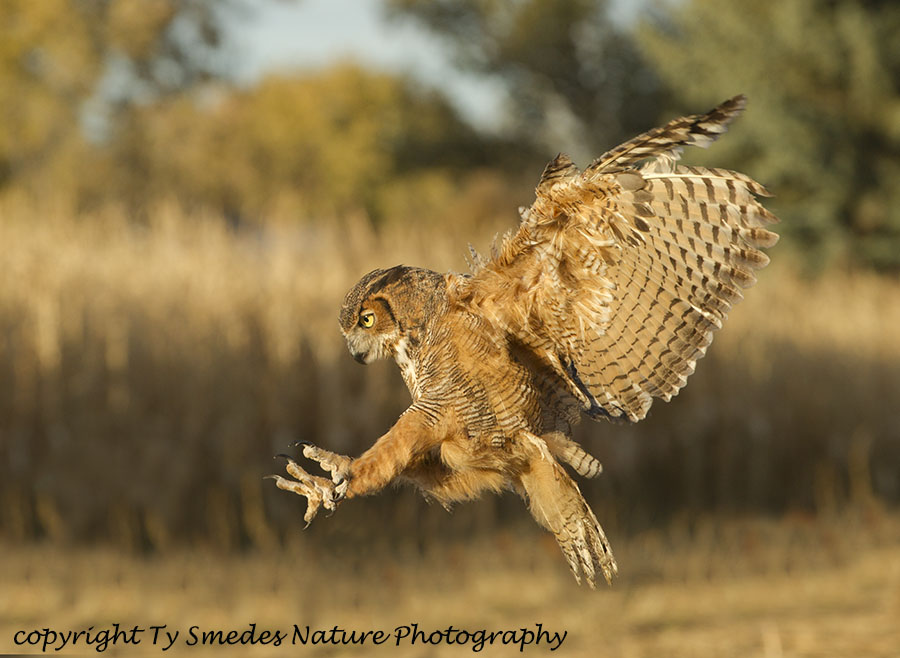The Great Horned Owl, Bubo virginianus, frequently evokes a primal sense of awe. Perhaps it’s the penetrating gaze, or the subtle rustle of feathers as it glides through the nocturnal landscape. But this fascination transcends mere aesthetics. It stems from the owl’s remarkable ecological niche and its captivating array of adaptations. This exploration delves into the world of the Great Horned Owl, unraveling its intricate life history and revealing the secrets behind its enduring mystique.
I. The Owl’s Visage: Decoding the Physical Attributes
The Great Horned Owl is a substantial avian predator, easily identifiable by its prominent “horns” – tufts of feathers that enhance its imposing appearance. These “horns,” despite their nomenclature, are not auditory structures. They serve as visual signals, potentially aiding in intraspecific communication or disruptive camouflage. Individuals display considerable variation in plumage coloration, ranging from rufous browns to near-black, a testament to their adaptability across diverse habitats. Their large, forward-facing eyes, equipped with a reflective tapetum lucidum, grant exceptional nocturnal vision. This feature allows for efficient prey detection in low-light conditions. Their powerful talons, capable of exerting hundreds of pounds of pressure per square inch, constitute formidable weapons, enabling them to subdue prey significantly larger than themselves.
II. Habitat and Distribution: A Continental Generalist
The Great Horned Owl boasts one of the most extensive distributions of any owl species in the Americas. They inhabit a wide spectrum of environments, from boreal forests to arid deserts, demonstrating remarkable ecological plasticity. This adaptability allows them to thrive in various habitats, including deciduous woodlands, coniferous forests, grasslands, and even suburban areas. A key factor in their habitat selection is the availability of suitable nesting sites. They frequently utilize abandoned raptor nests, tree cavities, or even artificial platforms.
III. Hunting and Diet: An Apex Predator of the Night
As crepuscular and nocturnal hunters, Great Horned Owls are opportunistic predators, consuming a diverse array of prey. Their diet primarily consists of small mammals, such as rodents, rabbits, and squirrels. However, they are also known to prey on birds, reptiles, amphibians, and even insects. The owl’s hunting strategy typically involves perching on a high vantage point, patiently scanning for potential prey. Upon detection, they silently swoop down, using their acute hearing and vision to pinpoint the target. Their zygodactyl feet, with two toes pointing forward and two backward, provide a secure grip, preventing prey from escaping. Indigestible materials, such as bones and fur, are regurgitated in the form of pellets, providing valuable insights into their dietary habits.
IV. Reproduction and Development: Raising the Next Generation
Great Horned Owls typically begin breeding in late winter or early spring, a period characterized by increased daylight hours and the availability of prey. They are generally monogamous, forming long-term pair bonds. The female owl typically lays a clutch of one to five eggs, incubating them for approximately 30-37 days. During this period, the male owl provides food for the female. Newly hatched owlets are altricial, completely dependent on their parents for warmth and sustenance. They develop rapidly, fledging after approximately 6-7 weeks. However, they continue to rely on their parents for several months after fledging, learning essential hunting skills. Juvenile mortality rates can be high, particularly during their first winter, as they face challenges in acquiring sufficient food and avoiding predators.
V. Vocalizations: A Symphony of the Night
The Great Horned Owl possesses a diverse repertoire of vocalizations, playing crucial roles in communication and territorial defense. Their most recognizable call is a deep, resonant hoot, often delivered in a series of four to five notes. This vocalization serves as a territorial announcement, deterring potential rivals and attracting mates. They also produce a variety of other sounds, including screeches, hisses, and barks, used in different contexts, such as courtship displays or alarm calls. The specific characteristics of their vocalizations can vary geographically, reflecting regional dialects. Analysis of these vocalizations provides valuable insights into their social behavior and population structure.
VI. Conservation Status and Threats: Navigating a Changing World
The Great Horned Owl is currently classified as Least Concern by the International Union for Conservation of Nature (IUCN), indicating that it is not currently facing significant threats to its overall population. However, they are susceptible to a variety of anthropogenic factors, including habitat loss, pesticide contamination, and collisions with vehicles. Habitat fragmentation, resulting from urbanization and agricultural expansion, reduces the availability of suitable nesting sites and prey. Rodenticides, used to control rodent populations, can indirectly poison owls that consume contaminated prey. Implementing effective conservation measures, such as protecting and restoring habitats, regulating pesticide use, and mitigating vehicle collisions, is essential for ensuring the long-term viability of Great Horned Owl populations.
VII. Cultural Significance: A Symbol of Wisdom and Mystery
The Great Horned Owl holds diverse cultural significance across different societies. In some cultures, they are revered as symbols of wisdom, knowledge, and intuition. Their association with nocturnal habits and silent flight has often linked them to the supernatural and the unseen. In other cultures, they are viewed with suspicion or fear, associated with death or bad omens. Regardless of the specific interpretation, the Great Horned Owl’s presence has consistently captured the human imagination, reflecting our enduring fascination with the natural world.
Ultimately, the allure of the Great Horned Owl lies not only in its imposing presence but also in its quiet mastery of its environment. Its exceptional adaptations, coupled with its ecological versatility, paint a portrait of a truly remarkable creature. Continued research and conservation efforts are vital for preserving this magnificent species and ensuring that future generations can continue to marvel at its presence in the nocturnal realm.
